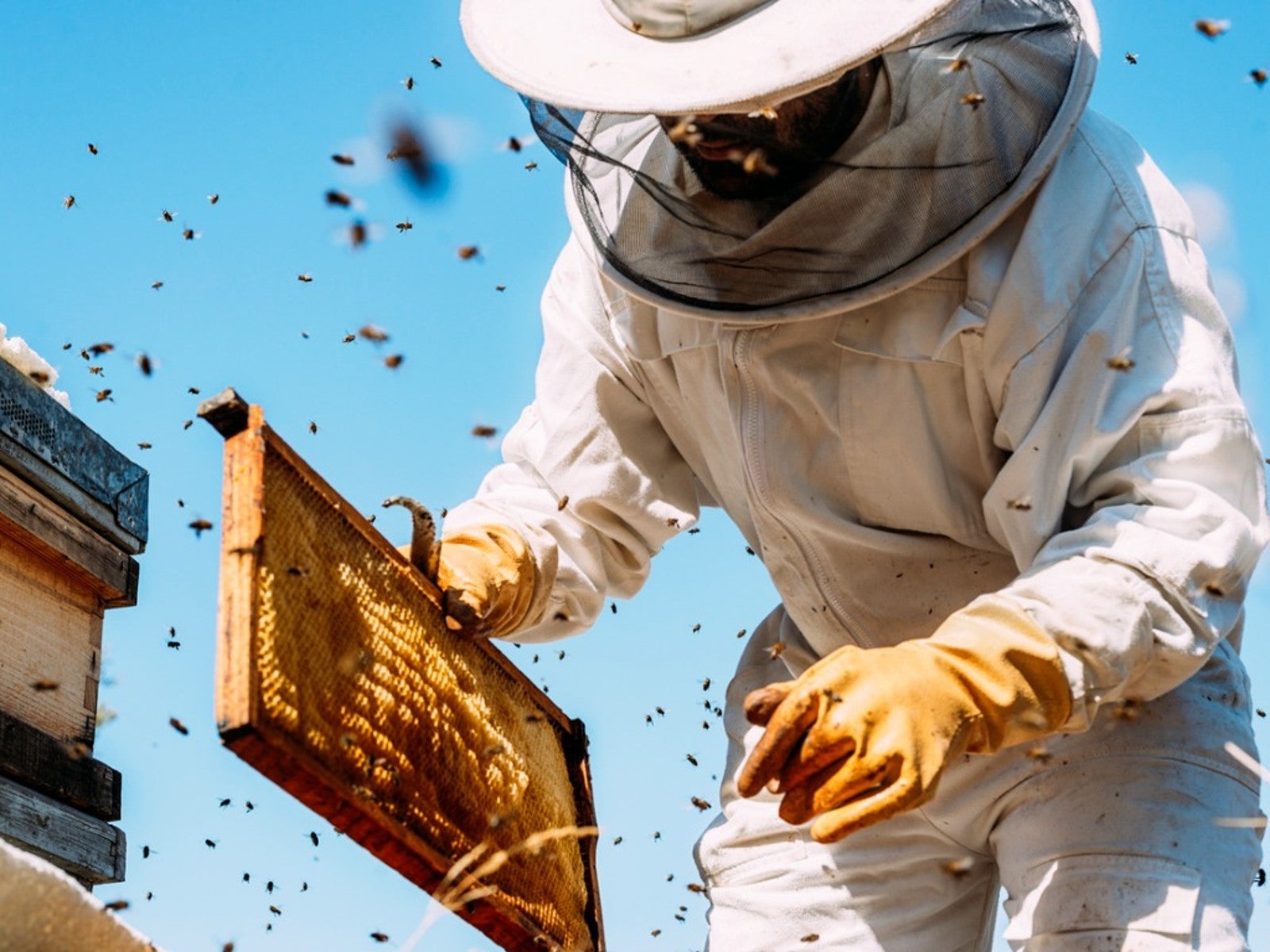Do All Bees Sting?


Knowing which bees sting and which bees don’t sting is useful information for anyone who spends time outside. You’ll also need to watch out for wasps, hornets, and other flying insects that pack a mean punch.
Can All Bees Sting?
Did you know that only half of the species of bees in the world can sting? Those that can sting will generally leave you alone unless you get too close to their hives, or they get tangled in your clothing.
An example of a bee that cannot sting is the male carpenter bee. Often mistaken for bumblebees, the real issue with this species is that they can damage wood. The females burrow into soft wood to make their nests. The males act aggressive at times but can’t sting. The females can sting but rarely do.
Types of Stinging Bees
There are many different types of bees that sting, but that generally don’t unless provoked:
- Honeybees. Honeybees are social bees, meaning they live in hives in colonies. Social bees are more likely to sting. They aren’t very aggressive, but they will sting if you bother them. If you disrupt the hive, they can sting in very large numbers.
- Bumble bees. These are the big, fuzzy bees you’ll see awkwardly floating from flower to flower, looking like they shouldn’t be airborne at all. They can sting but are gentler even than honeybees. Unlike honeybees, bumble bees can sting multiple times, but the risk is very low.
- Africanized honeybees. These are hybrids between European honeybees and an African species. They sting and are more aggressive than other honeybees. Their venom isn’t any stronger, but they will sting in larger numbers and follow you for longer, so they are more dangerous. They are currently in southern and southwestern U.S. states.
Other Stingers
Bees often get the blame for stings actually caused by other species, which are more minor pollinators:
- Paper wasps. Most people know these wasps by their papery nests, often built under the eaves of buildings. The wasps are reddish or dark brown with some yellow.
- Yellow jackets. These wasps are often mistaken for honeybees. They have yellow and black stripes but are smooth rather than fuzzy. The burrow in the ground or in walls and are very aggressive.
- Bald-faced hornet. Despite the name, this is a wasp. It has black and white markings and builds nests high in trees.
- European hornet. This is the only true hornet in the U.S. They look similar to yellow jackets, but they are much less aggressive.
- Cicada killer. This is a fearsome looking, large wasp. They feed on cicadas, dig in the ground, and are not aggressive to people.
Sign up for the Gardening Know How newsletter today and receive a free copy of our e-book "How to Grow Delicious Tomatoes".

Mary Ellen Ellis has been gardening for over 20 years. With degrees in Chemistry and Biology, Mary Ellen's specialties are flowers, native plants, and herbs.